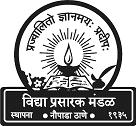|
||||||||||||||||||||
Stone Age India
Volume 63 Number 1, January/February 2010
by Samir S. Patel
Does evidence buried by a super-volcano redraw the map of human migration?
The great alchemy of prehistoric archaeology is the way it conjures our story--of
modern humans, that is--from bits of stone and bone. But the tale
of our evolution and migration to every corner of the planet is filled with
gaps and guesswork. Scholars have been trying for decades to make sense of
it. Much of their focus for the Middle and Upper Paleolithic eras, from roughly
250,000 to 30,000 years ago, has been on Africa, Europe, and the Levant (eastern
Mediterranean). University of Oxford archaeologist Mike Petraglia sees an
injustice there, which he and a diverse team of
researchers from three continents are working to rectify. Specifically, they
believe that India deserves a central place in our understanding of the
Paleolithic. Their evidence suggests that modern humans arrived there rather
early and thrived under some unusually grim conditions.
The missing chapter of our story that they have uncovered in the state of Andhra Pradesh has no clear beginning, but it has a rare bookmark, a hazy horizon of fine grit that marks what may be the most important event in human history. And there--around 74,000 years ago, well before Homo sapiens are thought to have arrived in India--is where we start.
The Jurreru Valley is wide on the bottom and steep on the sides. Now dammed,
in the Middle Paleolithic its river lazily meandered and fed shallow lakes
during the monsoon. The water attracted people--who they were is a critical
matter of debate--and funneled them through the landscape. They hunted, gathered,
and made tools from stone eroding out of the valley's south side.
But one day 74,000 years ago their lives took a dramatic turn. A low, distant
rumble rolled in from the south, followed hours later by horizon-spanning
clouds stacked like thunderheads. Day turned darker than night, a chill hit
the air, and there began a blizzard of fine, abrasive
particles--ash from 1,700 miles southeast on the Indonesian island of Sumatra.
One of the most explosive events known, the Toba Volcano spewed 670 cubic
miles of ash 25 miles into the atmosphere. In India there was nowhere to hide.
Four inches of the stuff blanketed the subcontinent. The eruption also cast
sulfur into the stratosphere, forming an aerosol that scattered sunlight.
Some climatologists believe this touched off a thousand-year cold snap, and
geneticists say humans underwent a drastic population drop, known as a bottleneck,
some time in the Middle Paleolithic. A popular theory puts the two together;
Toba almost wiped us out. Pity the poor people of Jurreru. Or should we?
Samir S. Patel is a senior editor at ARCHAEOLOGY.
C 2009 by the Archaeological Institute of America
www.archaeology.org/1001/abstracts/stone_age_india.html




